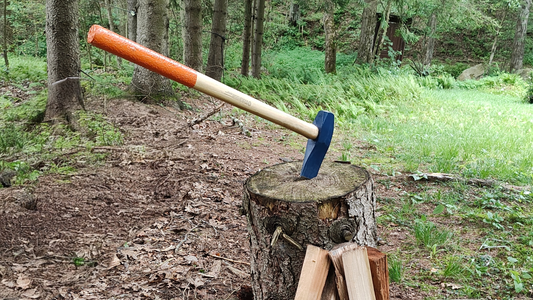If you're planning on splitting your own firewood, the tools you use will make all the difference—not just in how fast the work gets done, but in how safe, smooth, and easy the work feels. A good wood splitting maul should be built tough, balanced well, and ready to get the job done.
Some mauls may be made too light, making it harder to split logs effectively. Others may chip or stick after just one season of use. That’s why it’s worth investing in a high-quality tool from a company that knows what it's doing—so you don’t have to waste time or money on replacements that don’t last.
What Is a Wood Splitting Maul?
A wood splitting maul is designed for one specific job: splitting logs along the grain. That’s very different from an axe, which is intended for chopping or felling. A maul has a heavy head and a wide wedge that helps force the wood apart after impact. It’s the right tool when you're dealing with thick rounds or tough hardwood.
What to Look for When Choosing a High-Quality Wood Splitting Maul
Proper Head Weight
Look for a maul in the 4½ to 8-pound range. A 4½-pound head offers a great balance of control and striking power, especially for extended work sessions. Heavier mauls—closer to 8 pounds—may deliver more force per swing but can be harder to control over time.
Wedge-Shaped Forged Head
The head should be thick and wedge-shaped; a thin head will chip and wear down fast. Forged heads are typically stronger and longer-lasting than stamped or cast versions.
Durable, Shock-Absorbing Handle
You’ll feel the difference with a quality handle. Some people prefer the natural flex of a hickory wood handle, while others go for fiberglass options for added durability and weather resistance. Either way, it should hold up to repeated use without splintering or loosening.
Common handle options include:
-
Traditional Hickory (32") – A classic choice made from high-quality American hickory, offering natural flex and a familiar feel.
-
Hickory with Safety Grip (32") – The same durable hickory handle, enhanced with a tacky, non-slip coating for added control in wet or gloved conditions.
-
Fiberglass (34") – A longer, composite handle built for durability and impact resistance, often preferred for year-round or high-volume use.
Why Quality Matters
You could spend a few bucks less on a mass-produced maul from the local hardware store—but that often means cutting corners on materials, performance, and lifespan. A well-made maul, on the other hand, is something you’ll be able to rely on for years.
Coming Soon
If you’ve been waiting for a better way to split wood—something tougher, sharper, and built to last—you won’t have to wait much longer. A new American-made wood splitting maul is launching soon, built with a forged 5.5 lb head, hardened steel, and premium handle options.
Stay tuned for the official release the week of August 4, and be among the first to swing this new addition to the lineup.
Sign up for our newsletter or follow us on Instagram to be the first to know when it drops.





